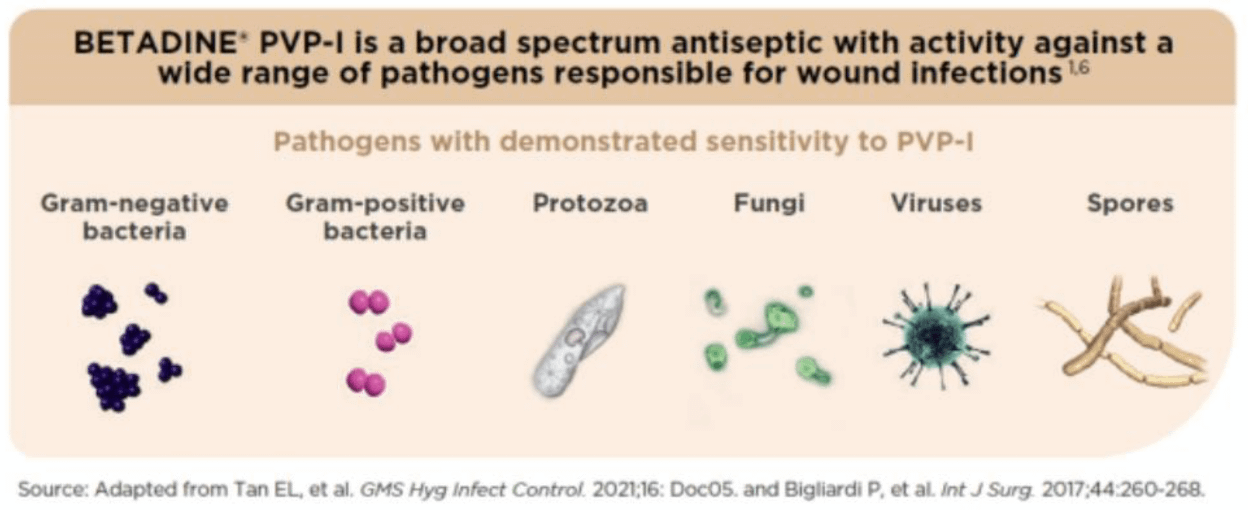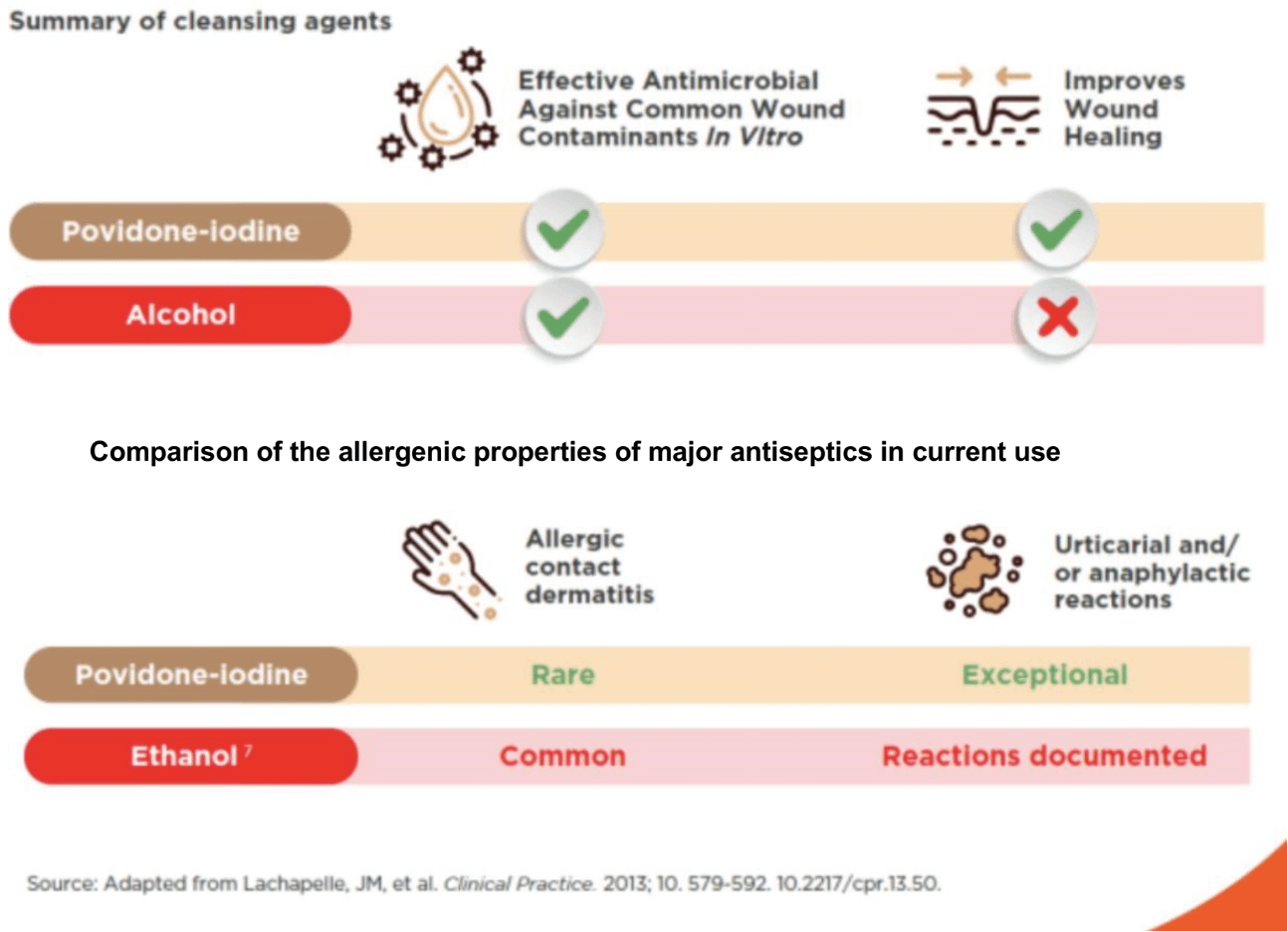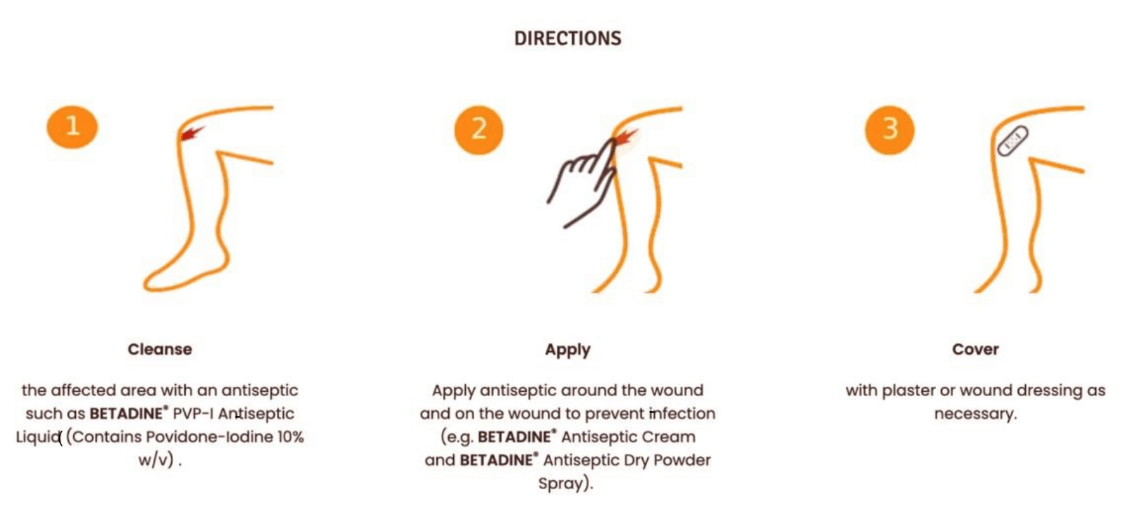When it comes to wound management, the ultimate goal is to minimize the risk of opportunistic infection and aid the healing process.
For many, a common practice to clean a wound is using rubbing alcohol, which is easily available at pharmacies. However, rubbing alcohol is not always the right choice for wounds, despite its antiseptic properties and its use in healthcare settings as low-level disinfectants.
Why is alcohol not preferred as a disinfectant for wounds?
- Topically applied ethanol (in the form of cosmetics or hand disinfectants) on unlacerated human skin can cause toxic effects if applied on damaged skin, especially in children.
- The antimicrobial activity of alcohol is significantly lower at concentrations below 50%.
- Rubbing alcohol lacks sporicidal activity and has poor activity against certain non-enveloped viruses, hence alcohols are not recommended for sterilization.
- Besides skin cancer, alcohol abuse on the skin has been associated with the development of several skin disorders, including psoriasis, discoid eczema and superficial infections.
- Ethanol and isopropyl alcohol exposure increases biofilm formation of S. aureus and S. epidermidis (bacteria that can cause skin infections) at concentrations used in clinical settings. A biofilm is a colony of microbes encased in a matrix which can become attached to a wound surface and can affect the healing of the wound.
- 70 - 80% ethanol solutions can cause unpleasant stinging.
Until unambiguous evidence on the safety of ethanol in topical preparation exists, the necessity of its use should be critically evaluated and it is better substituted with other compounds.
What advantages does Povidone-Iodine (BETADINE®) have over rubbing alcohol?
Povidone-Iodine (BETADINE®) provides an alternative to rubbing alcohol with a range of products that offers wound care from start to finish. Our solutions are formulated with povidone-iodine (PVP-I), a powerful, broad spectrum topical antiseptic with properties to help prevent infections and promote healthy wound healing.
- Broad spectrum with no microbial resistance
- Active in the presence of biofilms and interfering substances (i.e. blood, exudates)
- Minimal cytotoxicity (toxicity to cells causing cell damage or death)
- Has anti-inflammatory properties
- Promotes or does not interfere with wound healing
- Good tolerability
PVP-I, one of the most commonly used antiseptics in healthcare and surgical settings, has all the characteristics of a good antiseptic, making it a good choice for the treatment and prevention of infections in wound care. PVP-I’s features include:
- Kills bacteria, several viruses, fungi, spores and protozoa.
- No reported acquired resistance or cross resistance.
- Efficacy on wound healing in the presence of biofilms.
- Very low cytotoxicity compared to other antiseptics.
- Only weak, allergic activity.
- Good skin tolerance.
- Duration of effect on skin is 12-14 hours based on in-vitro data.
Povidone-Iodine (BETADINE®) has rapid antimicrobial activity with a 99.99% kill rate in 30 - 60 seconds against a wide range of pathogens responsible for wound infections, even when diluted, based on invitro data.

PVP-I is also proven to be an effective cleansing agent and improves wound healing. In addition, it has a better tolerability profile compared to other antiseptics.

PVP-I has also been shown to reduce infection, promote wound healing in surgical wounds, as well as improve wound healing times in chronic wounds.
Follow up with Povidone-Iodine (BETADINE®) 10% Antiseptic Ointment, Povidone-Iodine (BETADINE®) 5% Antiseptic Cream, or Povidone-Iodine (BETADINE®) 2.5% Dry Powder Spray, and cover up the wound with a plaster or dressing, as necessary.

If you have any questions regarding the management of your wound or if symptoms persist, consult your doctor as your physician understands your condition best.
.png?sfvrsn=49271803_1)
